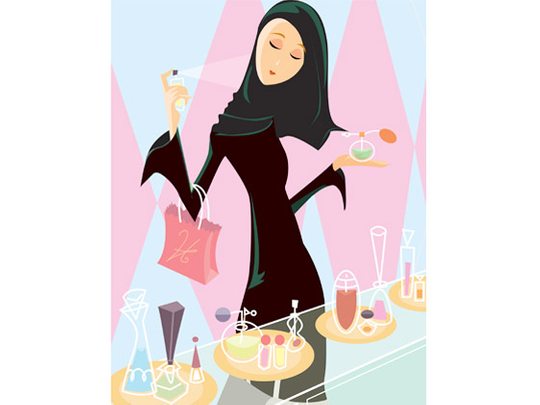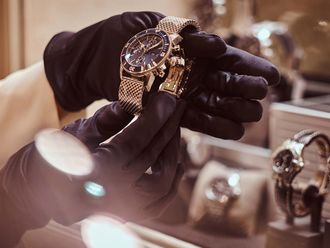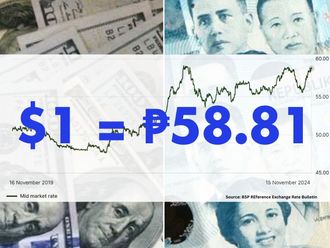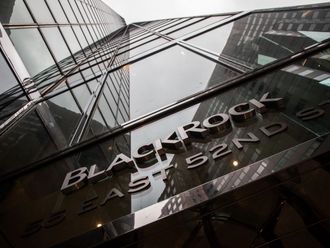
Dubai: The dusky, woody scent associated with the perfumed robes of the men and women of the Middle East is slowly seeping into the international market.
The use of fragrances in daily life has always been integral to life in the Middle East with close to 84 per cent of women in Saudi Arabia scenting themselves daily.
Within the UAE, Ajmal, Rasasi, Al Haramain and Swissarabian perfumes form the big four.
The GCC perfume market has always been a luxury worth splurging on with the average spend being Dh1,200 per person.
The regional industry, which is worth Dh11 billion per annum, accounts for approximately 20 per cent of the world market, according to the International Journal for Business Strategy.
While Asian and European markets traditionally favour the softer floral and citrus perfumes, consumer tastes are moving towards scents derived from the aromatic oils of oud, sandlewood and amber.
With more outlets selling oud perfume in Europe, oriental scents have grabbed the attention of Western clientele, along with their regular Middle Eastern customers.
"There has been a greater uptake of oriental perfumes overseas and the number is growing quarter on quarter year on year.
"The client base is a mix of foreign and Arab buyers. These scents are also popular in the east, where countries like Malaysia, Singapore and Thailand, to name a few, appreciate such scents," says Abdullah Ajmal, deputy general manager of Ajmal Perfumes
Arabian Oud's outlets in London have been attracting an increasing number of customers.
According to Shaikh Abdul Aziz Al Jasser, Chairman of Arabian Oud, 80 per cent of sales in the UK and France are to non-Arabs; 40 per cent are American and 60 per cent are distributed among various European and African nationalities.
Scent variations
According to Ajmal, there are variations in the oriental line of fragrances, for example the heavy oriental range tends to be popular primarily among local Arab consumers, whereas the semi or light oriental fragrances tend to lure buyers from east and west.
"There has been a far greater acceptance of oriental product lines within the wider population segment and that has helped push our products to a whole host of nationalities, in essence our reach has expanded to include more people outside our core target segment. The demand for Western and French style fragrances isn't waning, but it does not grow at the same rate as oriental style fragrances that are gaining in popularity, not just in the Gulf but internationally as well," said Ajmal.
The perfume's growing popularity is also evident from the number of western perfume brands creating their own oud-centric scents.
"International perfumes are always looking for new ideas. Agarwood is a perfect ingredient to create new scents as it has been little used in the past. Fragrance creators have discovered that the Gulf market does represent a very high potential in terms of perfume consumption. Those special oud fragrances are often created for the Gulf region," says Shahzad Haider, chairman of Fragrance Foundation Arabia.
Tom Ford has launched Oud Wood, and Yves Saint Laurent has included the agarwood (or oud) cologne, M7 in its range. Both Ormonde Jayne (London-based niche brand) and Montale (Paris-based niche line) have launched oud-based fragrances.
"Arabs love the fact international brands are offering new creations around agarwood, but only if they are of good quality. It shows that tradition can also fit with modernity and that agarwood can be very trendy. However, the natural oud scent remains mainly with Arab buyers. Western oud perfumes tend to be a reproduction of the original natural scent as western consumers tend to prefer lighter perfumes than Arabs," says Haider.
While the perfume industry has taken a slight hit, its status as an affordable luxury as well as being traditional has kept demand up.
Studies have shown that Arabs use seven times as much perfume than European consumers, according to Haider.
"The perfume industry has seen a slowdown after many years of progressive growth. This is mainly due to a change in purchasing behaviour brought about by the economic slowdown in their respective countries.
"However the Gulf continues to grow, albeit at a much slower rate than before," said Ajmal.
The product demand exists, but consumers are more cautious with their spending, preferring to evaluate each purchase decision instead of buying on impulse.
Where an average transaction used to be Dh500, it has dropped to Dh300. The frequency is also a lot lower with consumers purchasing products once every two months instead of once a month.
- Dh1,200 average spend per person on perfume in the GCC
- Dh11b the value of the whole perfume industry
- 20% the percentage of the GCC perfume industry globally
Arabic sensations
The ‘oud' scent of Arabic perfume is a big part of tradition and deeply embedded within the local culture of the GCC. During special occasions such as Eid and Ramadan expensive oud and amber perfumes are often used as gifts.
Oud is a resin from the Aquilaria tree found in the jungles of Assam, eastern India which is a main source of supply. Oud is also sourced from Thailand, Malaysia, Vietnam, Cambodia and Indonesia.
Derived form the essence of agarwood trees, oudh can take up to 40 years to harvest and can cost tens of thousands of dollars per kilo.
Arabs have used the fragrant oud oils for centuries. Trade routes to obtain fragrant products were established throughout the Middle East long before 1500 BC.
"While there is a transition in progress where more and more people are opting for modernised versions of the Oudh scent, the traditionalists hold on to their collection and wear it with a sense of pride, and a tribute to their place of belonging," says Abdullah Ajmal, deputy general manager of Ajmal Perfumes.












